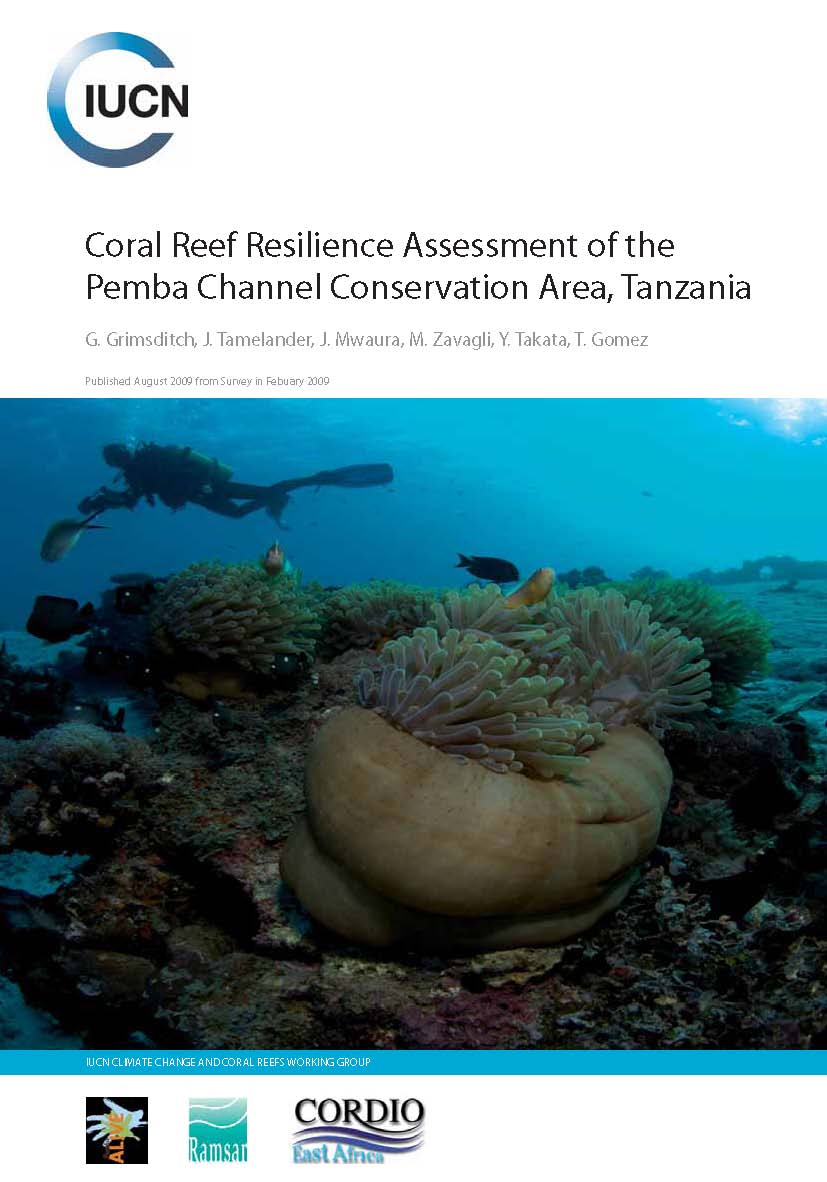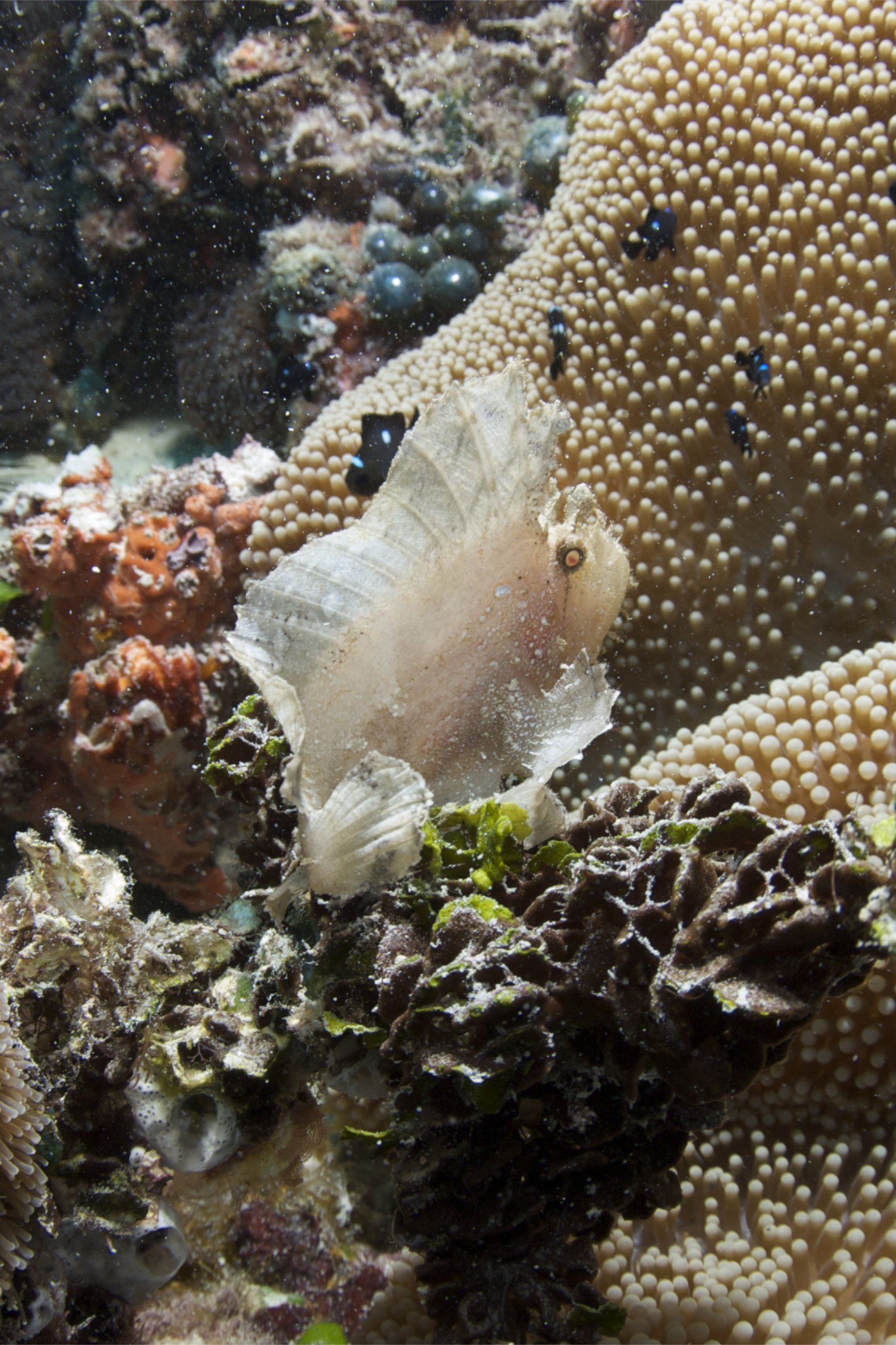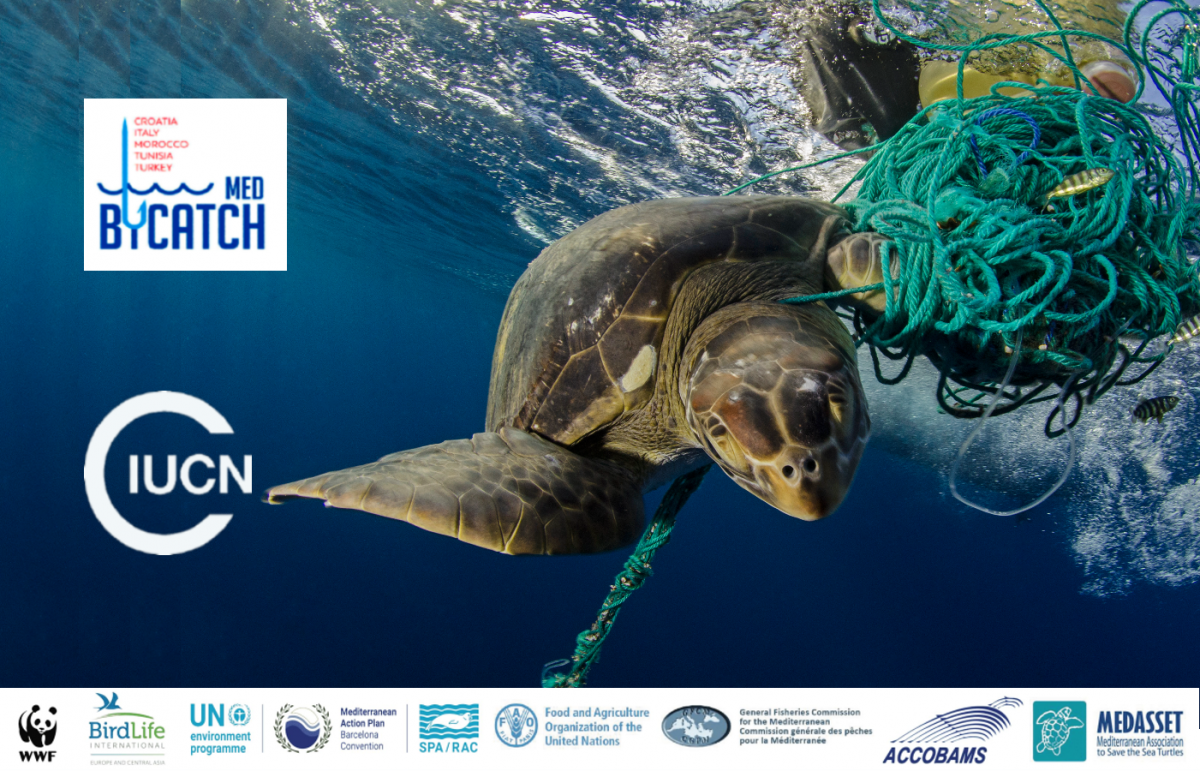Coral Reef Resilience Assessment of the Pemba Channel Conservation Area, Tanzania
This report outlines results of an IUCN assessment of the resilience to climate change of Pemba’s coral reefs.
The coral reefs of Pemba, Tanzania, are among the most diverse in East Africa. However, they are extremely vulnerable to climate change. Thirteen reef sites on western Pemba covering a range of reef habitats were surveyed using a recently developed resilience assessment methodology, covering coral and algal community, herbivorous fish populations and specific resilience indicators.
Coral reef conditions were highly variable. The highest hard coral cover (86%) and the highest coral diversity (42 genera) were recorded in the no-take zone at Misali island, while degraded sites such as Paradise and Fundo Outer had low coral cover (3% and 5% respectively), low coral diversity (23 and 33 genera respectively) and are dominated by rubble and turf algae.
Overall patterns showed that the healthiest sites are fringing sites such as Misali or Mandela or channel sites such as Manta or Kokota. Inner sites such as Fundo Lagoon, The Hole or Msuka Bay had lower coral cover due to lack of recruitment. The most degraded sites were fringing sites such as Fundo Outer or Paradise, probably due to stresses such as coral predation by crown-of-thorns starfish, bleaching or destructive fishing.
The resilience of Pemba’s coral reefs to climate change is under serious threat. However, these threats are manageable. Some possible first steps include:
1. Use resilience data to inform management spatial planning by identifying resilient reefs
2. Tackle the overfishing and destructive fishing problems
3. Understand the crown-of-thorns problem
4. Promote ecological resilience through protection of functional processes and alleviation of local stresses rather than technological fixes
This report details the results of the study conucted in Febuary 2009.





